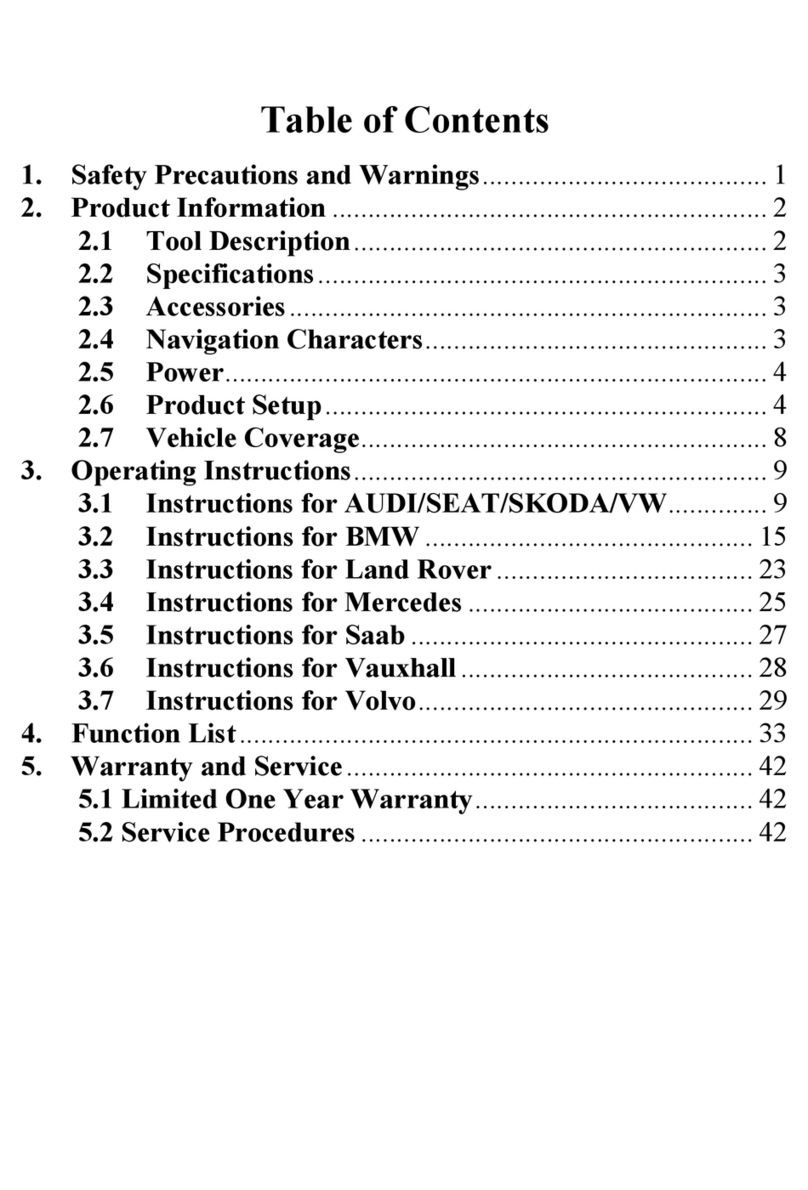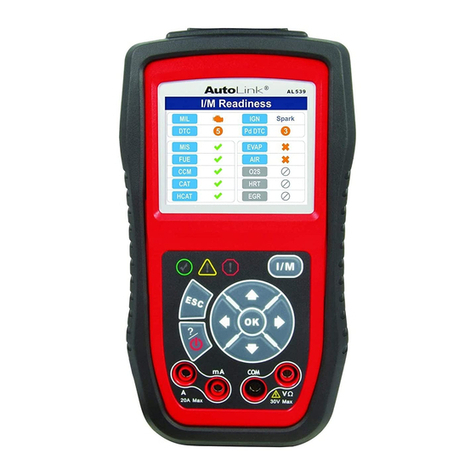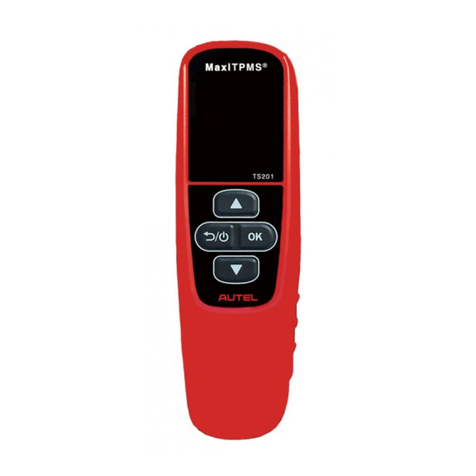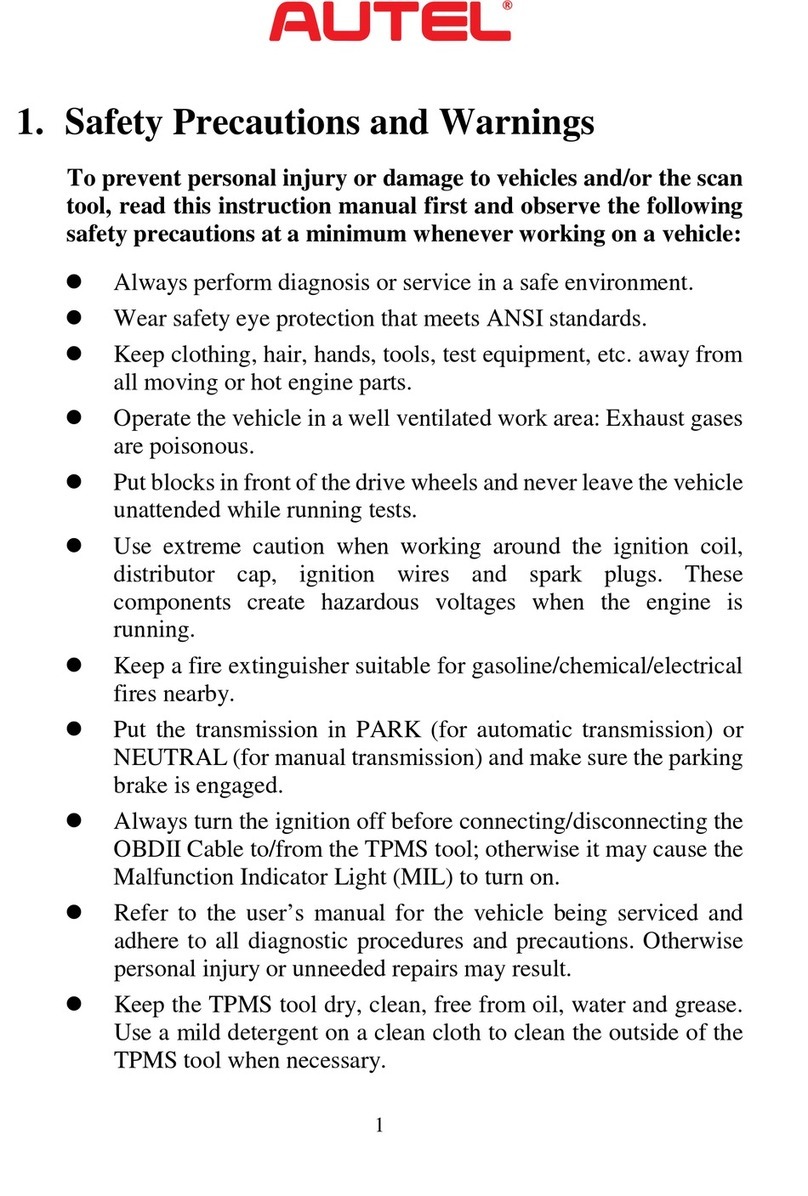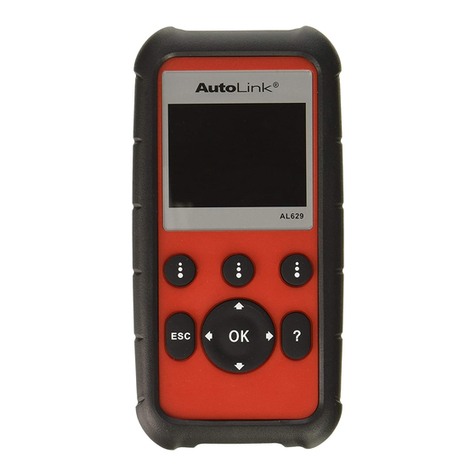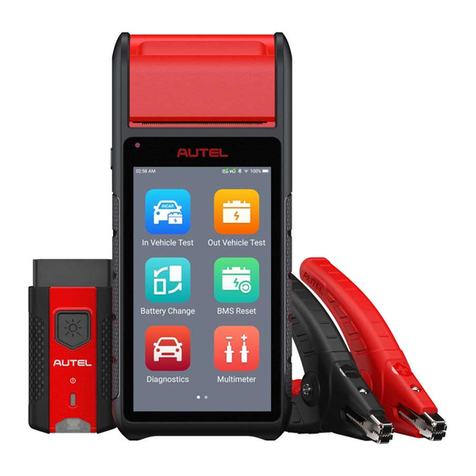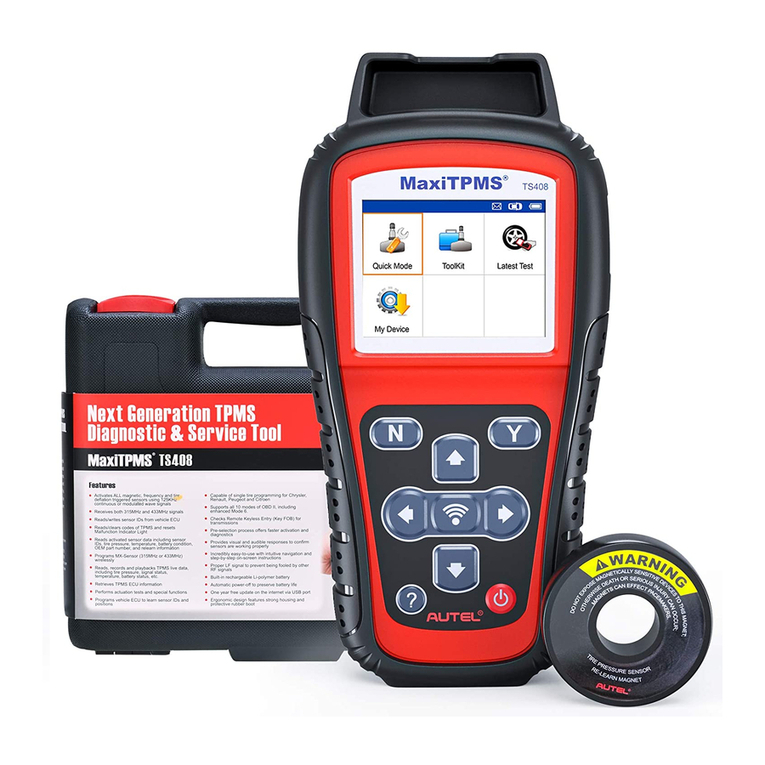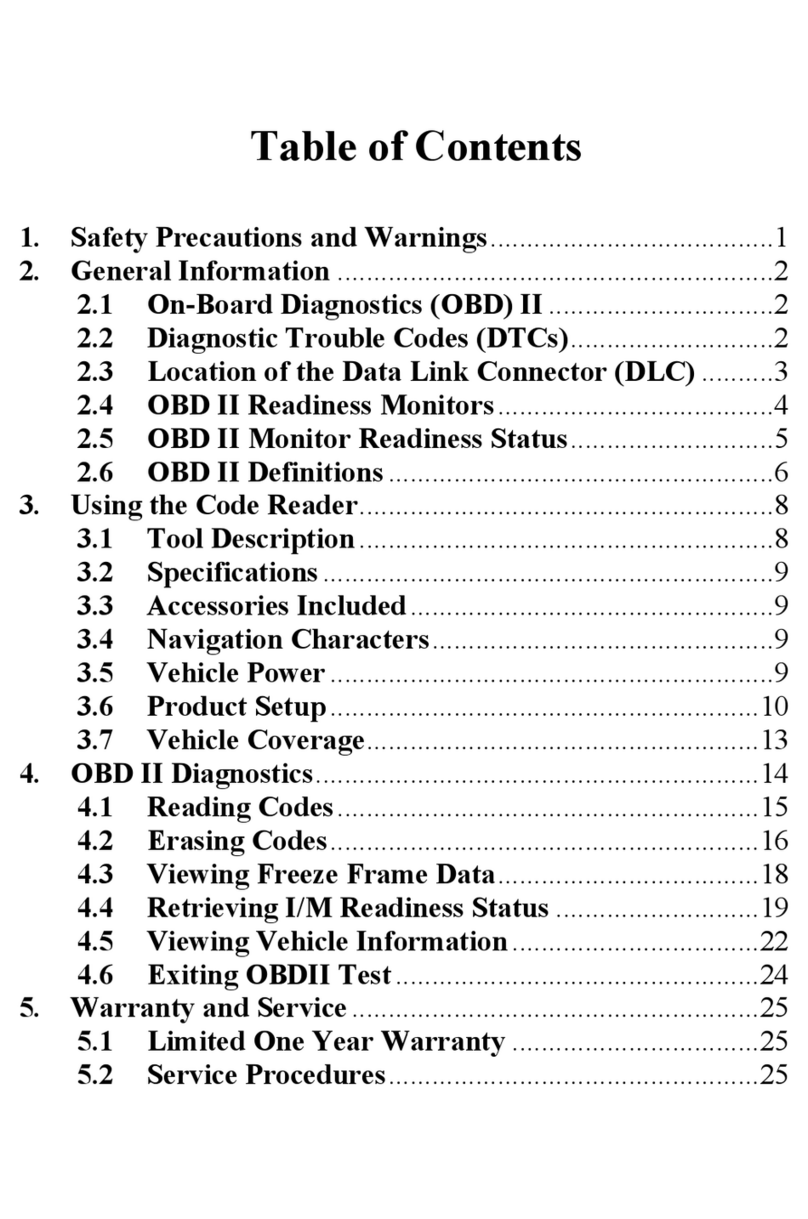
vi
7.1 NUMBER OF TIRES ............................................................................19
7.2 UNIT ...............................................................................................19
7.3 TIRE TYPE.......................................................................................19
7.4 TREAD CHECK MODE........................................................................20
7.5 BRAKE DISC WEAR LIMIT ..................................................................20
8DATA QUERY..............................................................................................21
9SYSTEM CALIBRATION..............................................................................22
10SETTINGS ...................................................................................................23
10.1 NETWORK CONNECTION ....................................................................23
10.2 BRIGHTNESS....................................................................................23
10.3 SLEEP.............................................................................................23
10.4 AUTOMATIC SHUTDOWN ....................................................................23
10.5 LANGUAGE AND REGION....................................................................24
10.6 ABOUT ............................................................................................24
10.7 UPDATE ..........................................................................................24
10.8 RESTORE FACTORY SETTINGS............................................................24
10.9 RESUME ANIMATION GUIDE................................................................24
11MAINTENANCE AND SERVICE..................................................................25
11.1 MAINTENANCE INSTRUCTIONS............................................................25
11.2 TROUBLESHOOTING CHECKLIST.........................................................25
12SERVICE PROCEDURES ...........................................................................27
12.1 TECHNICAL SUPPORT .......................................................................27
12.2 REPAIR SERVICE..............................................................................28
12.3 OTHER SERVICES.............................................................................29
13COMPLIANCE INFORMATION ...................................................................30
13.1 FCC COMPLIANCE ...........................................................................30
13.2 SAR...............................................................................................31
13.3 RFWARNINGSTATEMENT.........................................................31
13.4 ROHS COMPLIANCE....................................................................31
13.5 CE COMPLIANCE.........................................................................31
13.6 MIC COMPLIANCE .......................................................................32
